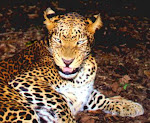
The Wild Turkey Tom
By: Ken La Rive © 2001
It has been said that Benjamin Franklin wanted the turkey to be our national symbol. Some saw his point. It is a majestic bird. However, I’d hate to eat our freedom’s symbol for Christmas dinner. After all, the greatest nation on earth needs a symbol of strength, like a high flying predator, and a swift hunter and
By: Ken La Rive © 2001
It has been said that Benjamin Franklin wanted the turkey to be our national symbol. Some saw his point. It is a majestic bird. However, I’d hate to eat our freedom’s symbol for Christmas dinner. After all, the greatest nation on earth needs a symbol of strength, like a high flying predator, and a swift hunter and
fisher.
What could be more perfect then an Eagle? It is, in its own realm, the top of the food chain. But I’m sure that in our early history, and I hate to admit, but both the Bald Eagle and the Wild Turkey had a special place at the Colonial table…
The first time I saw a turkey was in Amite, Louisiana, in the middle sixties. I was with a friend visiting relations, and we took a couple of their horses for an afternoon ride. I had a crazy one that seemed to be trying to knock me off by galloping under
low trees. Suddenly, we came upon a large Tom gobbler that took off with the power of Ro-Dan. Its wing spread was awesome, and it flashed with vivid matalic colors in the sun. The trees shook with the wind it made, and then just as suddenly, it was gone. It was powerful and beautiful to behold!
I’ve seen a lot of turkey on the Evangeline trail around Alexander, and also Tunica Hills around St. Francisville. They are not easily seen when you’re walking, unless you surprise them from a distance on a trail’s dogleg. They have keen senses, a fear of man, and a survival savvy. I have heard them gobbling all around me, but seldom do you see one. It sometimes sounds like turkey laughter, but that could be my imagination. The best way to see them is to hide in their back yard, and let them come to you. That takes patience.
I hunt with a camera, not a gun, but in a way we tackle our sport the same way. I just don’t get to eat anything. Here are several observations from experience, and what I’ve heard, but please don’t base your hunting strategy on this…
“Turkeys roost in mostly the same area every night, high in the safety of trees.
“They fly down in the morning at dawn and back up at dusk.”
“Turkeys don’t like the thick of thickets, but open areas where they can see danger coming, and take flight.”
“Turkeys have a problem walking down hill, so they fly down. It probably has something to do with their center of gravity.”
“Turkeys don’t like to cross open water.”
Wildlife managers agree that having turkey in the woods is a sign of a healthy and balanced ecosystem. When factors such as over hunting by men or other predators is kept in check. If food, space, water, and proper shelter are available, the wild turkey will flourish. The turkey needs several different habitats, all in the same proximity, to raise their young successfully. There must be a safe habitat for spring nesting, possibly in a briar thicket, but also close to a clover field. A clover field is a good food source, and a safe brood range for rearing. After the poults are old enough, they will follow the hen anywhere, surviving through the changing seasons.
If the poult can survive the first six weeks it stands a good chance. By that time it is able to roost in the tree with its mother, and is removed from the dangers of ground predators such as raccoons and free ranging dogs. This phase of development is rapid and the young began to develop their adult plumage. Diet
changes from predominately insects, to a higher percentage of plant matter.
By fourteen weeks the males and females are distinguishable by their size and plumage, and the social pecking order for both sexes are formulated. The mama hen is still the boss, until all the males have left the brood. In the fall, the pecking order of the group has been established, and they become absorbed into the social structure of the surrounding population. When winter comes they are separated by sex, age and class, and finally settle into their winter range.
If you want to see a Wild Turkey Tom, there is a large Tom Gobbler walking free in the Acadiana Zoo! He loves to pose. When taking pictures of animals, always try and have the background in shadow, or out of focus. If you are close enough, use a strobe even in bright sunlight. This way there will be no harsh shadows on the subject, and it will stand out with a darker background…



No comments:
Post a Comment